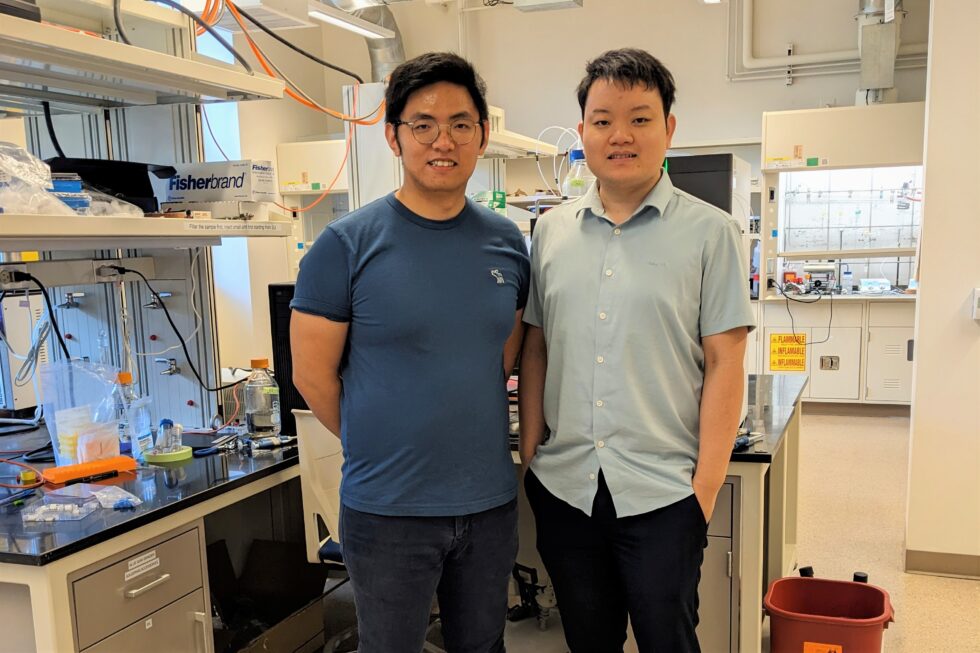Researchers Develop a ‘Sweet’ Strategy for Targeted Cancer Therapeutics
Researchers have demonstrated a novel two-step strategy to label and eradicate cancer stem-like cells (CSC) to improve cancer treatment prognosis.
CSCs are small sub-populations of cancer cells that constitute less than five percent of the tumor but are often persistent and aggressive, leading to increased chemotherapeutic resistance, tumor metastasis, and cancer relapse. Targeted delivery of therapeutic agents to CSCs is a promising approach to enhance cancer treatment efficacy and prevent relapse. Still, it is difficult to achieve in practice due to a lack of unique, targetable biomarkers for CSCs.

To address this challenge, a team led by Hua Wang (RBTE) in collaboration with Jianjun Cheng, both materials science and engineering professors, developed a creative two-step approach to label CSCs based on their intrinsically high levels of the intracellular enzyme aldehyde dehydrogenase 1A1 (ALDH1A1), followed by targeted treatment with a therapeutic.
“Previously, people relied on cell surface markers to identify and target CSCs, such as CD44. However, CD44 is not specific to CSCs, and the expression of CD44 varies significantly across different cancer types. So, we are thinking about how to find a more generalizable targeting method for CSCs,” said first author Yang Bo, a PhD student co-advised by Prof. Wang and Prof. Cheng. To achieve this, they developed an unnatural sugar precursor that is activated within the CSCs by ALDH1A1. The CSCs can then metabolize the activated abnormal sugar to generate an artificial marker displayed on the outside surface of the cells. The second stage of the two-step strategy involves the selective targeting of the labeled CSCs with a chemotherapeutic able to attach to the artificial surface marker through a click chemistry reaction.
The researchers found their labeling technique was more efficient at identifying CSCs in vivo than the widely-used CSC surface marker, CD44. They also demonstrated excellent anti-cancer efficacy in an advanced triple-negative breast cancer model using their strategy and known toxin, Monomethyl auristatin E.
Translating intracellular enzyme activity into a ‘chemical tag’ represents a promising new avenue for targeting cancers without distinctive surface markers. While antibody-based approaches have been the gold standard, Wang explains the limitations of conventional methods. “Antibody-based targeting strategies do have some limitations. They rely on endogenous protein receptors. Some types of cancers don’t have the characteristic or unique protein receptors. For triple-negative breast cancer, a subtype of breast cancer, there are yet to be any known targetable protein receptors,” said Wang.
The team also envisions adapting the modular design to accommodate targeted treatment with different chemotherapeutic and immunotherapeutic agents. Looking ahead, Bo said, “We think that these methods can be generalizable platforms for targeting the cancer stem cells and applying different kinds of prevalent therapeutics to the cancer cells.”
The paper “Leveraging Intracellular ALDH1A1 Activity for Selective Cancer Stem-like Cells Labeling and Targeted Treatment via Click Reaction” is available online.
